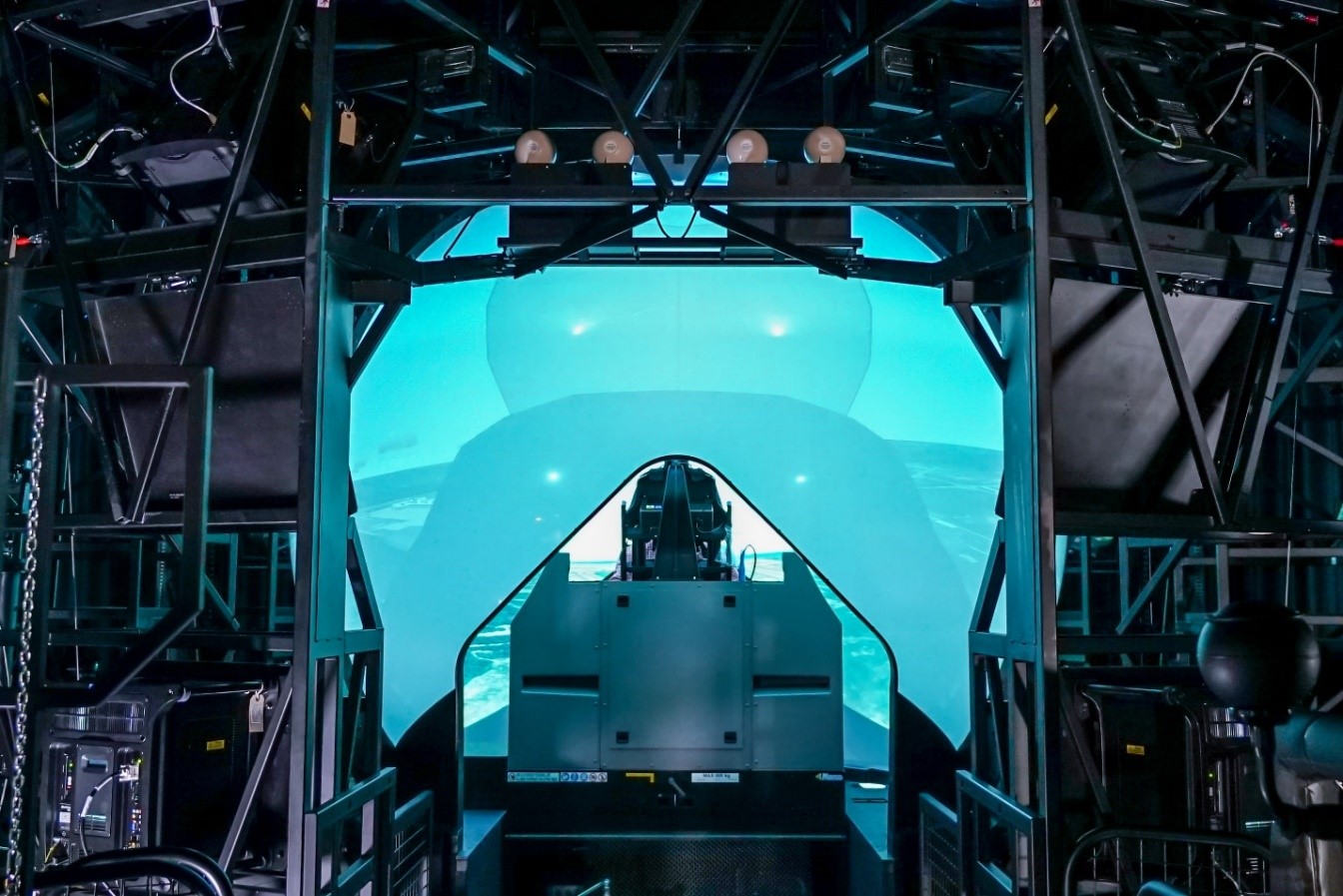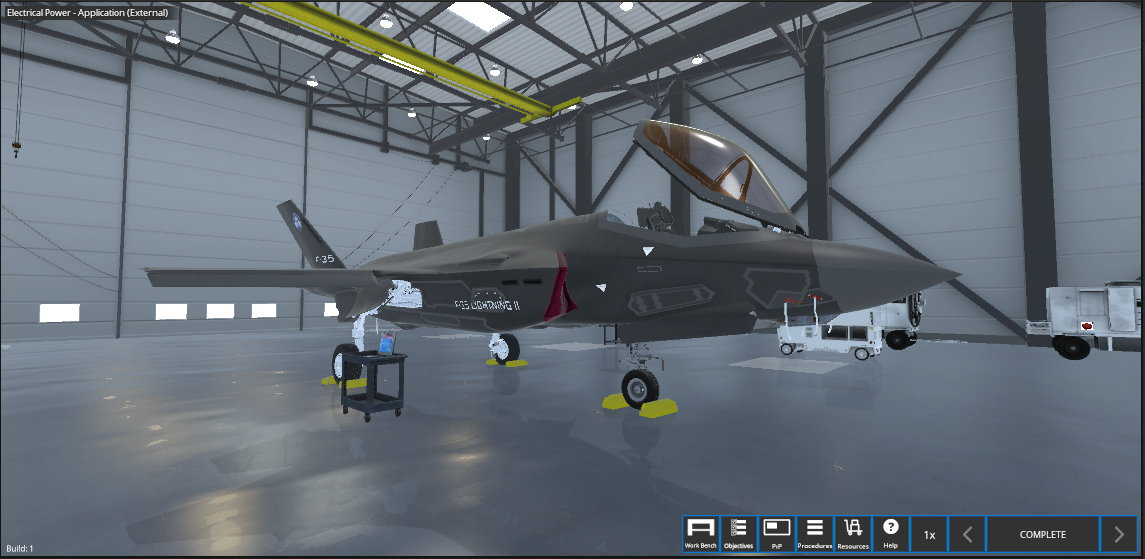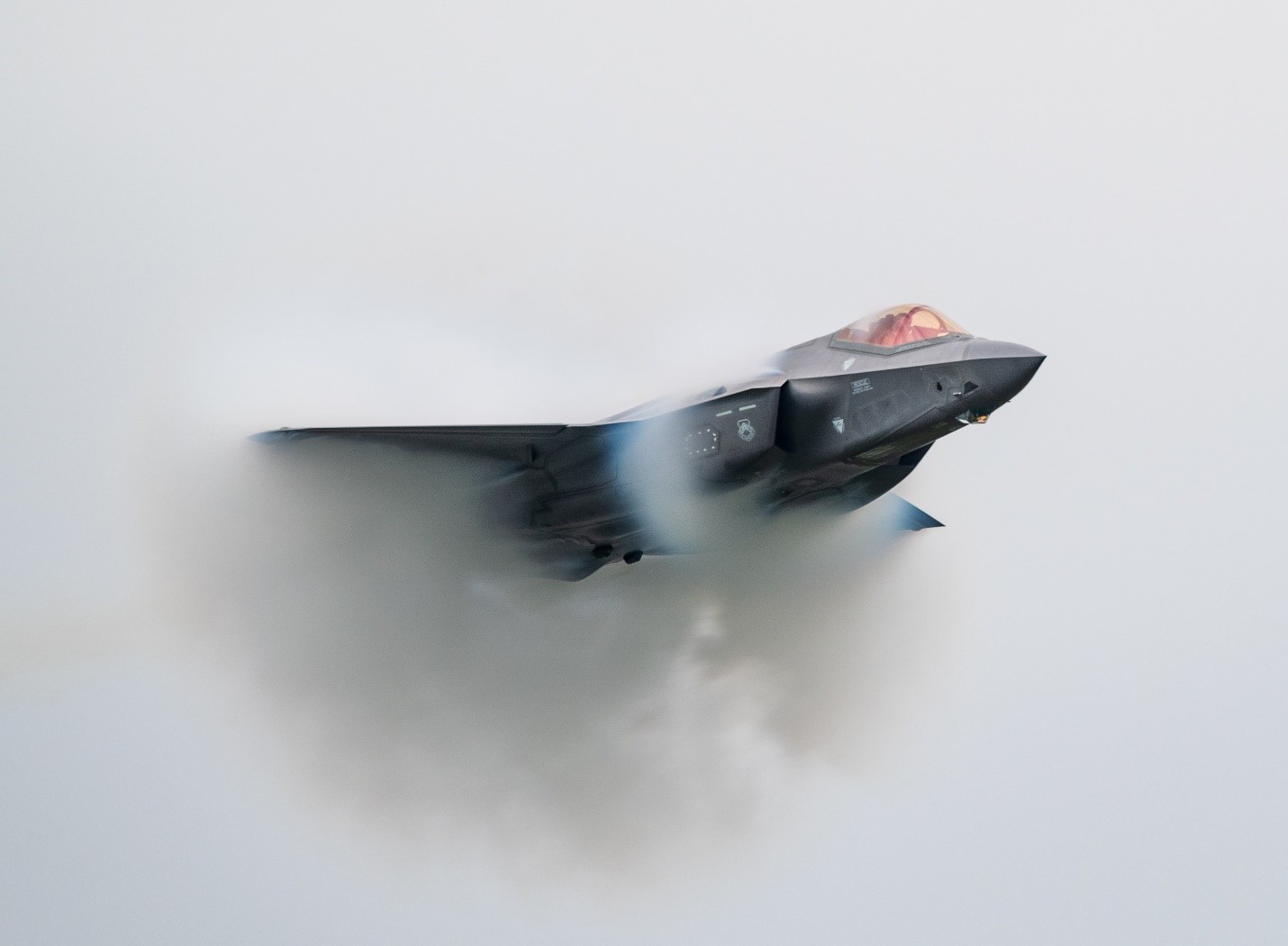News
Five Ways F-35 Training is Improving Mission Readiness for Pilots and Maintainers
December 01, 2020
It’s the morning of your first solo flight in the most advanced fighter jet ever created – the F-35. You’re excited and anxious because today culminates weeks of training and preparation. Once onsite, you get assigned your tail number. After hours of meticulous preparation and briefing, you head to the airplane knowing your maintenance crew chief has checked everything tip to tail getting it ready for flight. It will be flawless.
After you walk around the jet, you climb the ladder. This is the first time you’ll fly without an instructor pilot behind you. “Have I prepared and studied enough?” you think as you climb the first step. But, by the second step, you can see into the cockpit and feel at ease because the jet looks identical to the F-35 simulator you’ve been flying in for the past month.
Checklist procedures are complete. You’re strapped and sealed in, ready for your first sortie. The integrated power pack is on and you select ENGINE-RUN. You feel the vibration and hum of the engine. You’re connected only to the crew chief and after your taxi checks you’re cleared to disconnect. It’s just you and the wingman now on the radio. The ground crew cuts the tether, and you taxi out. You push the power up and hear the roar of the engine. The raw power of the jet is exhilarating.
As you begin to move, you lock eyes with your crew chief standing at attention and saluting you. It’s an unspoken agreement. A reminder that this is a serious business, but you are both professionals who have prepared for this moment. Taxiing down to the runway is second nature because you’ve seen this view dozens of times before in the simulator. Checklists complete and cleared for takeoff; you release the brakes, engage the afterburner, and start the takeoff roll, accelerating rapidly. Passing 100 knots – about 115 miles or 185 kilometers per hour - all systems are good. You have a moment to relax and realize what is happening.You smile as you bring it into the air - nose up and wheels leaving the ground. Your training kicks in. You’re ready for the mission at hand.
How do pilots and maintainers prepare for days like this?
When recalling his first time flying the F-35, retired Luke AFB Wing Commander Brigadier General and current Lockheed Martin Global Sustainment Senior Manager Todd “Tales” Canterbury said, “It’s amazing how comfortable I felt. There was never a doubt when looking for the right switch and it felt like I had been flying the airplane for years. I never forgot it was the instructor pilot and my maintenance crew who got me there. I’m proud to lead the team who’s training the next generation of pilots and maintainers knowing that the fidelity of our devices will prepare them for the battlespace.”
Today, we’re creating an even better experience for pilots and maintainers to fly and sustain the jet.
Here are five ways Lockheed Martin is improving F-35 mission readiness:
1. Interoperability for Dispersed Virtual Training.
F-35 Distributed Mission Training (DMT) connects F-35 Full Mission Simulators (FMS) with other users in a geographically dispersed environment to create a shared virtual training experience. Sound familiar? It should. Much like online multi-player gaming, which allows users to play and connect despite physical distance, DMT allows pilots to train together in real-time. These large force exercises use multiple aircraft platforms to prepare for joint, all domain operations. The U.S. Air Force currently has DMT at Nellis Air Force base and will be followed by the U.S. Navy at NAS Lemoore and the U.S. Marine Corps at Miramar in 2021.

2. 90% Availability for On-Demand Mission Readiness.
F-35 training devices need to be readily available to meet pilot and maintainer readiness and capacity needs. Our simulators achieved a >90% Full Mission Capable Rate (FMC) in 2020. We’ve made dramatic improvements to put in place a high-velocity supply chain to meet the growing demand for simulators and software development. As the capabilities of the aircraft continue to advance, we are ensuring the training devices keep pace. Our training system ensures pilots and maintainers can go through basic to advanced scenarios in preparation for qualifications and the real fight.

3. Making Data-Driven Decisions is a Priority.
Tens of thousands of data points are collected each week on the F-35 Training program. Using data such as daily device status, training effectiveness, cost drivers and degraders, spares analysis and student throughput, we are developing the first of its kind F-35 Training Analytics Sustainment Dashboard and Scorecards. This will cut out manual work leading to increased productivity and reduced cost with an estimated savings of hundreds of hours per year.

4. Developing Next-Generation Training at the Point of Need.
We are committed to taking maintenance training from the classroom to the flight line. We’re developing a Next-Gen F-35 Mixed Reality Maintenance Training prototype using our Maintain3D Virtual Maintenance Training software. This will allow students to practice in a virtual environment reducing risk and freeing up the actual aircraft. This on-demand training can be tailored to specific users wherever, whenever they need it.

5. More Software Automation Increases Training Efficiency.
As we continue to evolve the F-35 to counter new threats, our training must evolve with it. We’re tearing down traditional development silos improving speed, reliability, and frequency of software releases to the enterprise at a reduced cost. In the past, deploying training software across our fielded devices took over a year, upgrading in batches and handled manually due to classification. Now, we’re automating software installations and developing electronic means to deploy classified releases. Pilots train with the same software they fly in the aircraft ensuring mission readiness.
